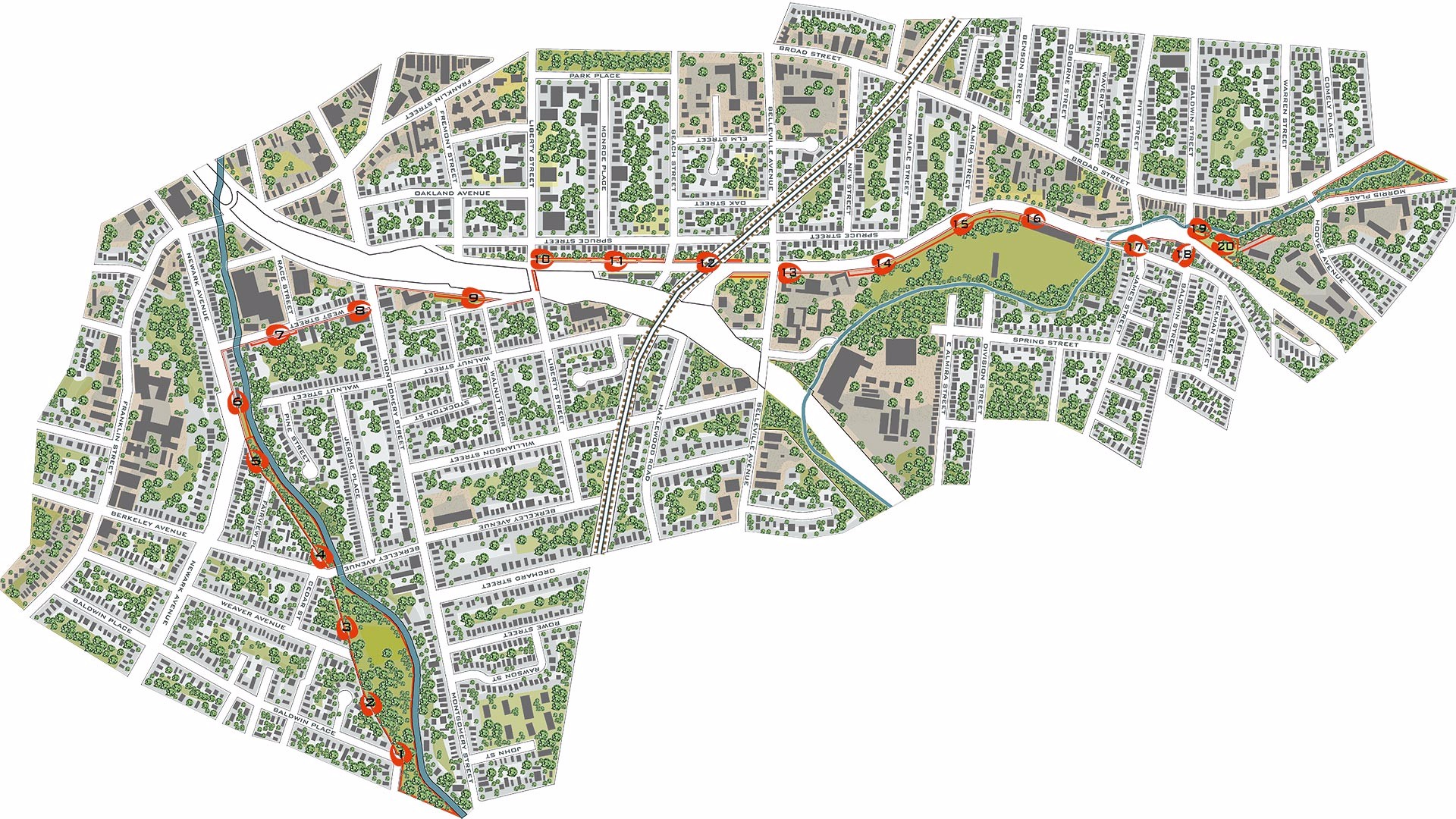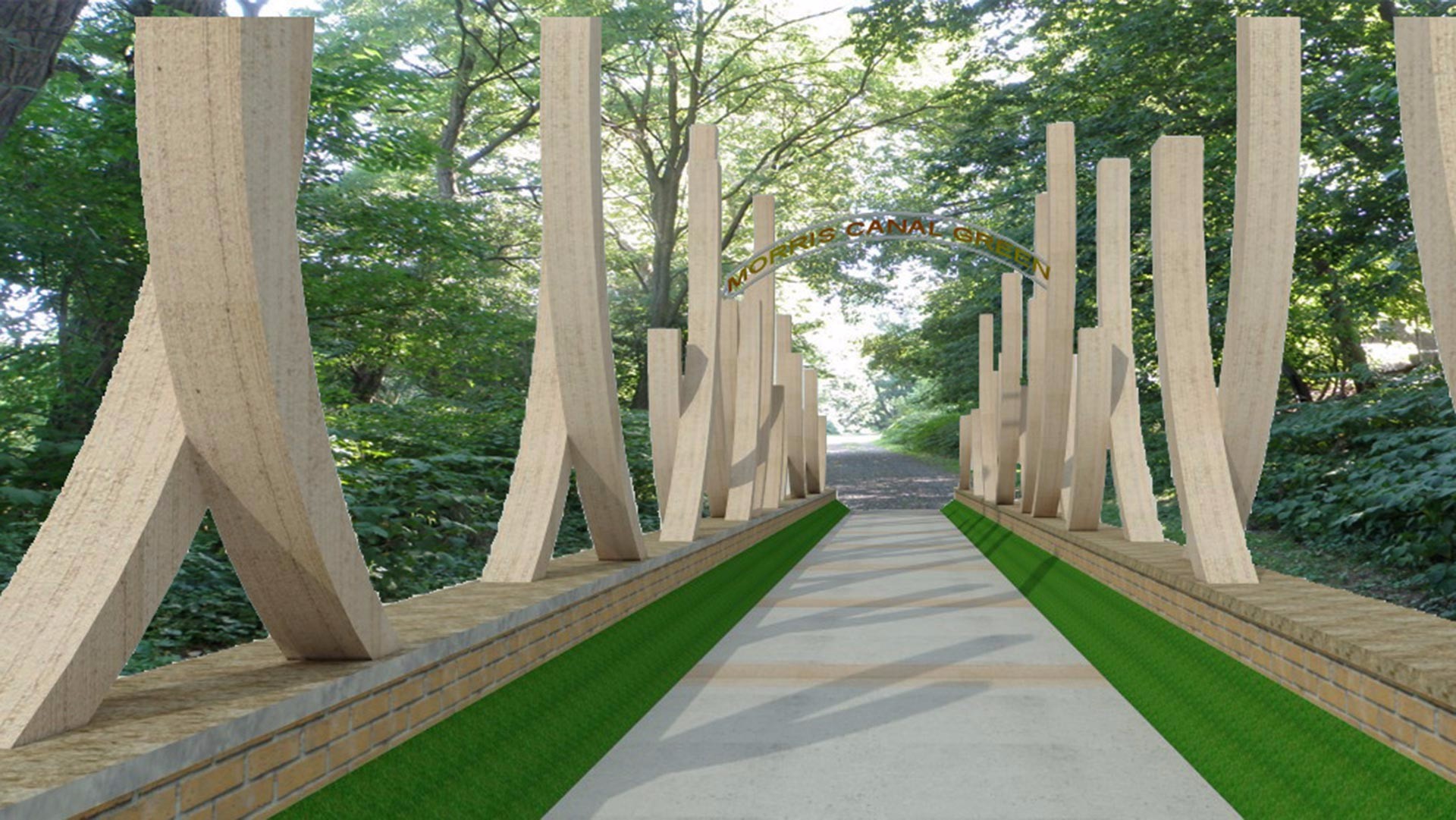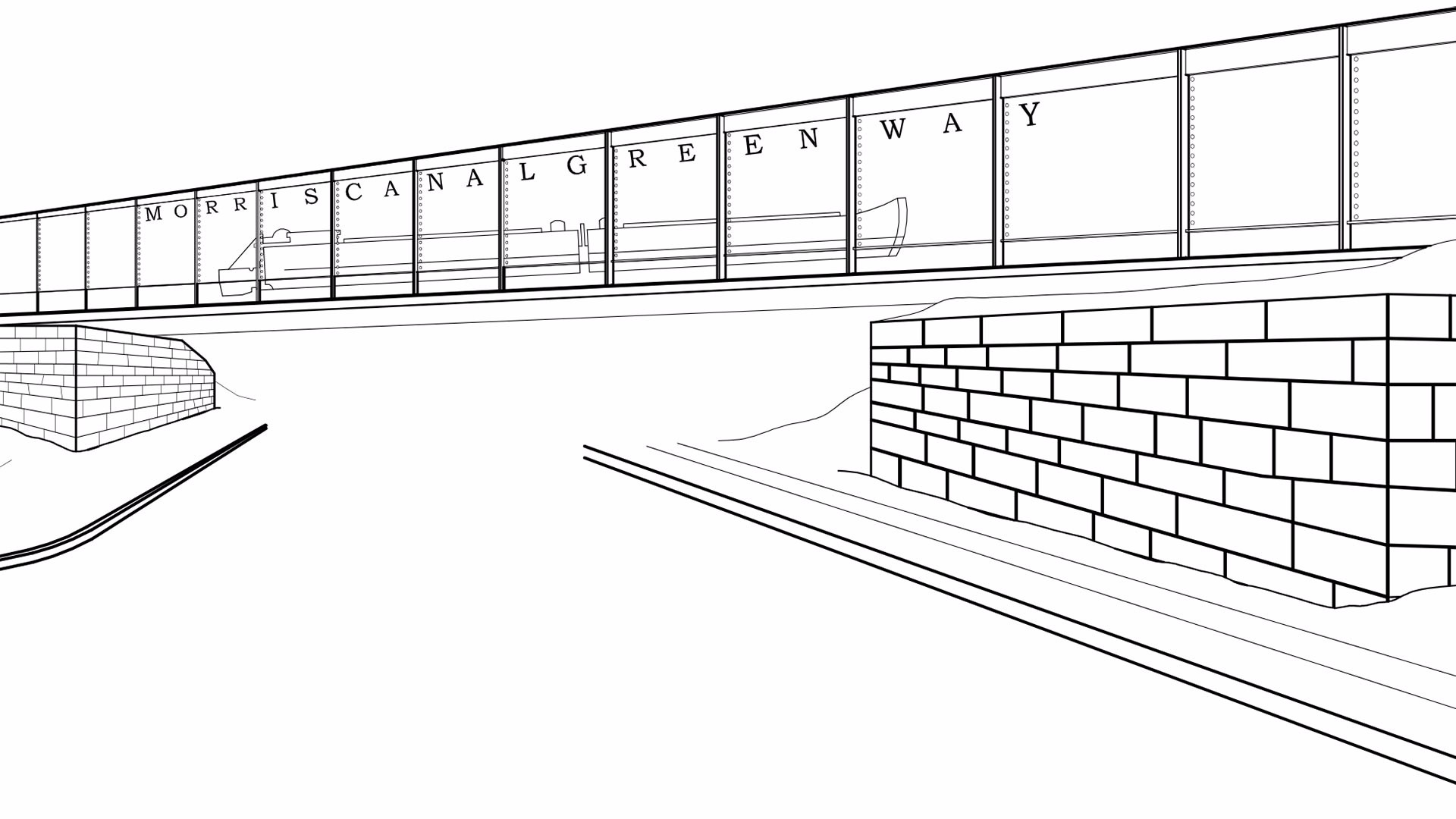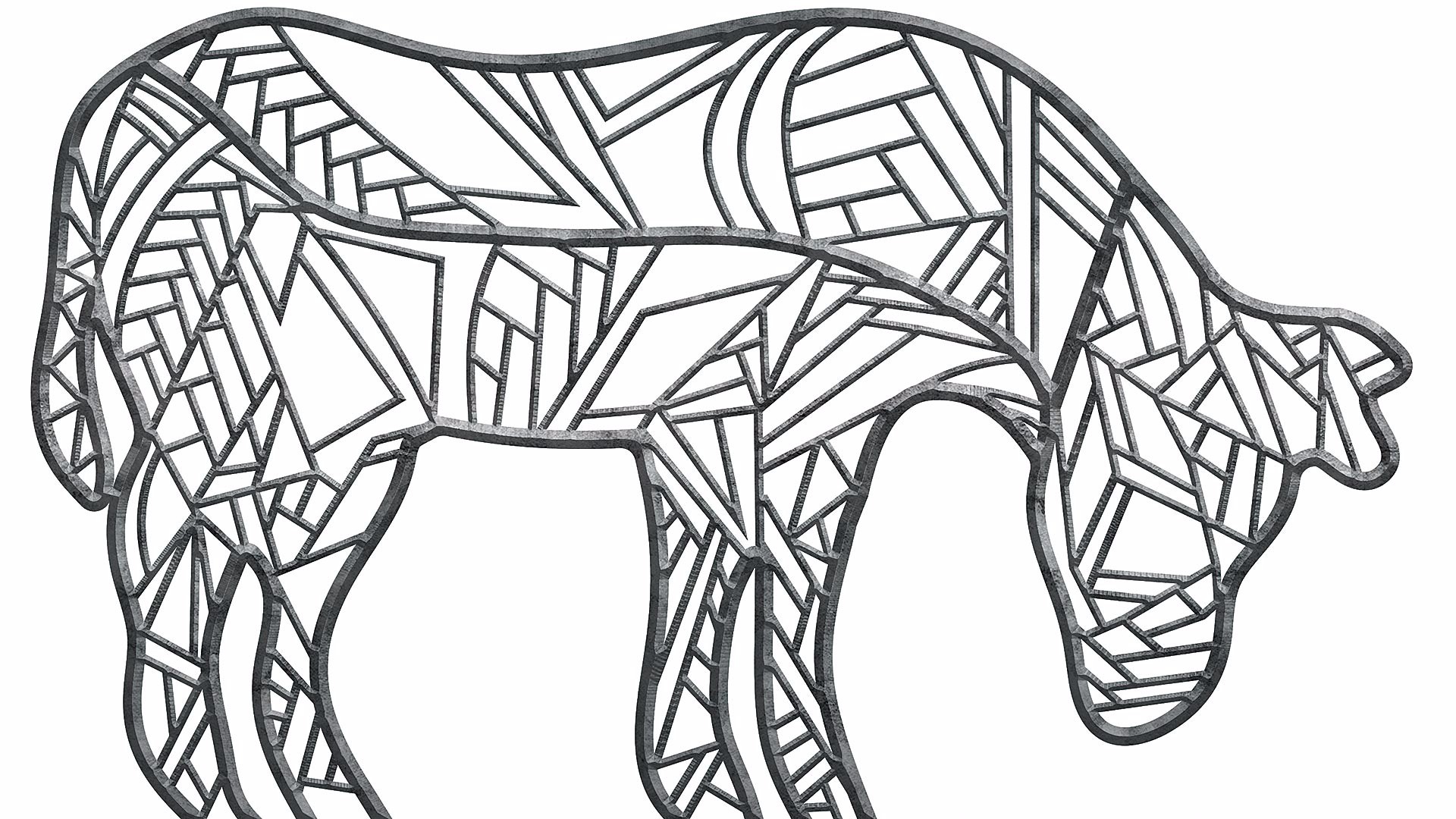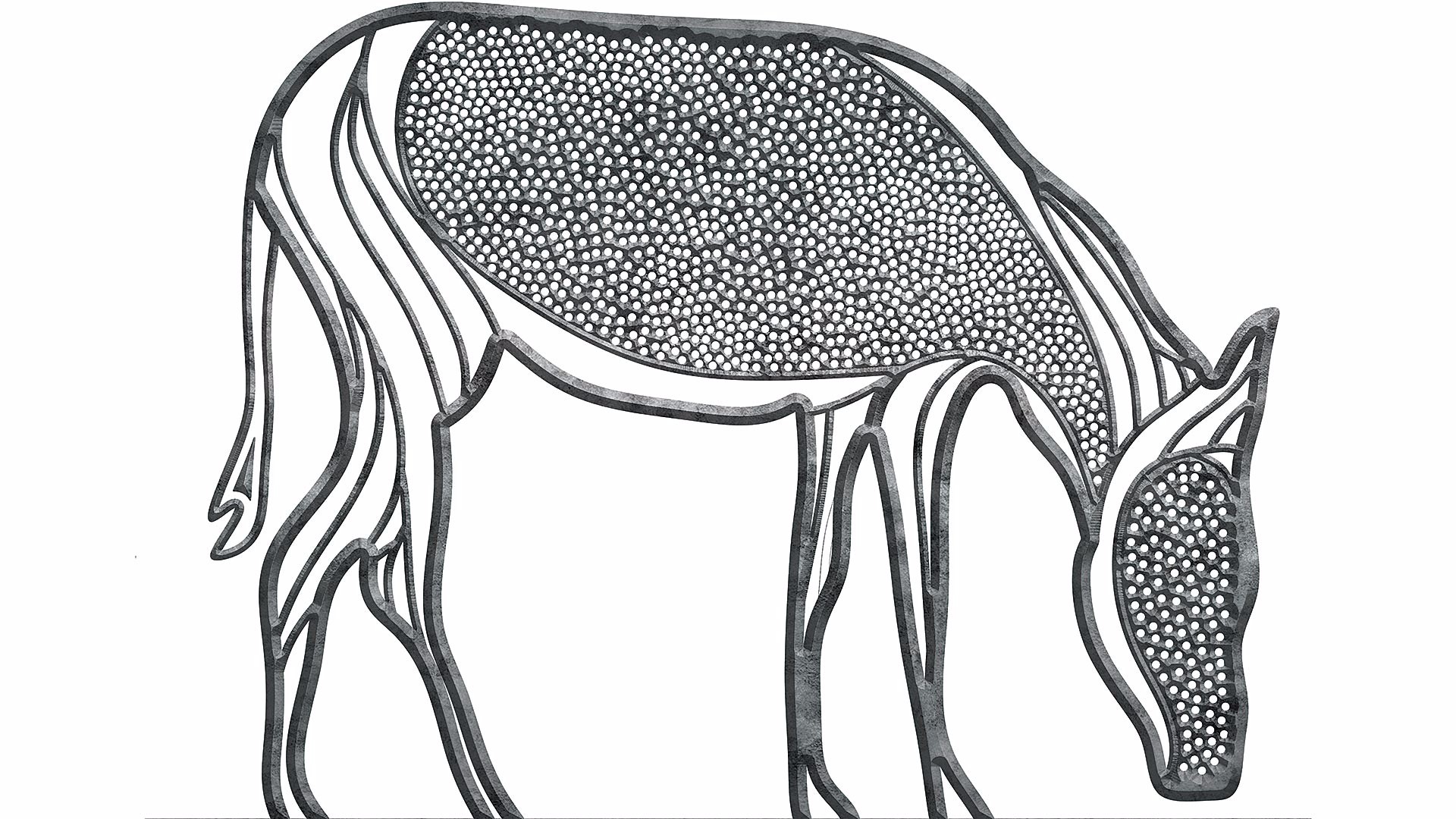Morris Canal Greenway
Location: Bloomfield, NJ
Status: In Development
Background: For nearly 100 years the Morris Canal played an integral role in the growth of industry throughout northern New Jersey. It's most impressive engineering feat is that it traversed the greatest change in elevation of any canal in the world (1,674 ft). Following it's decommissioning in 1924, many of the land parcels were sold off and redeveloped for new purposes. For example, in Bloomfield, NJ, the former Inclined Plane 11E was reconditioned into John F. Kennedy Drive North. In recent years, the North Jersey Transportation Planning Authority in partnership with other groups have championed the creation of a statewide "Greenway" along the path of the original canal featuring passive recreation parks and preserves. In 2014, the Township of Bloomfield established their own Morris Canal Greenway Committee to pursue this agenda, the first of it's kind in Essex County.
The Vision: In recognition of the significant role the Morris Canal played in both the state of New Jersey and the development of Bloomfield, NJ, Fused Studios created a conceptual master plan that seeks to establish a clear, coherent path that visitors to the community may navigate with or without a guide. Stretching almost five miles through Bloomfield when operational; today, there is little physical evidence that is recognizable as part of the Canal. Furthermore, these sites are isolated from one another, some of which fall onto privately-held land making them more difficult to introduce to the general public.
We are proposing a series of approximately (20) trail markers consisting of sculptural art installations spread at roughly equal intervals that can clearly be seen from one to the next. Since mules once pulled the boats along the Canal, it is only fitting that the mule become a mascot for this project and transport visitors throughout the path. These recognizable life-size silhouettes exhibited in a variety of gestural positions will ideally be designed by local artisans to give them a unique character. Due to the spatial limitations of narrow sidewalks in some locations, we propose that these mules be kept as two-dimensional as possible with materials emphasizing wrought iron or die-cast metals. Each trail marker is then accentuated by an informational kiosk either appearing on the sculpture directly or on an
adjacent decorative sign post. While the mules will face in the intended direction of travel, a series of hoof prints illustrated graphically on the ground plane will also extend the full length of the journey. By incorporating wayfinding devices at multiple scales and frequencies, more people are likely to take notice and explore areas of the community that they would otherwise overlook.
Beginning at Wright’s Field, this journey commences with a walk through the Morris Canal Memorial Gateway. We envision a 10.5 foot wide pathway nearly 90 feet long carved into the earth in the profile of the original canal. The dimensions are reminiscent of the canal boats with concrete ribs like hulls of the boat undulating along the full length. A wrought iron welcome sign hangs over the center of the structure at the location where the boats would have been hinged. The Morris Canal Greenway will then wind throughout the town encountering new parklets, exciting new exhibits, and creative new signage, until culminating at the Collins House Community Center and Museum.
